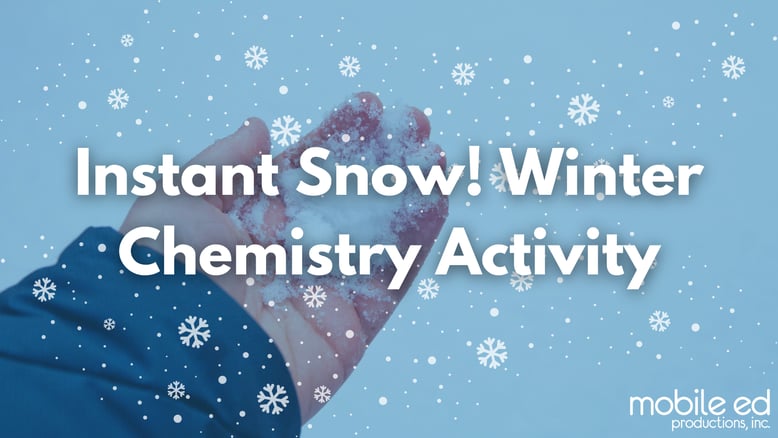
“To appreciate the beauty of a snowflake, it is necessary to stand out in the cold.”
– Aristotle
Whether you’re up north, where snow piles up for months, or down south, where snowfall is rare, kids are fascinated by snow! As educators, we love it too: it’s chemistry happening right before our eyes! But do you know how it works? Bring the snow into your classroom and learn how it forms this Winter by creating it with this simple and easy chemistry project.
What children don’t see in Disney’s hit movie Frozen is how Queen Elsa forms all the snow she creates in Arendelle. The snow we can sometimes see falling outside forms in the clouds when water vapor freezes before it can turn into water or rain. The clouds have to be very cold for this to happen, but when it does, snowflakes are created by crystals of ice growing around tiny particles of dust in the clouds. The snowflakes start very small and grow and grow! A snowflake can contain up to 200 crystals, and every snowflake is one-of-a-kind and unique!
The water molecules chemically bond in a hexagonal shape which helps give the snowflake its form. The ice grows faster near the outer edges of the prism, and six branches sprout from the corners of the hexagon, creating the classic snowflake shape we all love. As temperatures get colder, the branches grow and expand, creating bigger and even more unique snowflakes. The changing temperatures and hexagonal bonding pattern of H2O create the unique shapes of snowflakes we love to look at.
Easy Instant Snow:
Step 1: Gather Your Materials
What you’ll need:
-
-
- Iodized salt
- Water
- Mixing bowl
- Baking sheets/large plates
- Fork
-
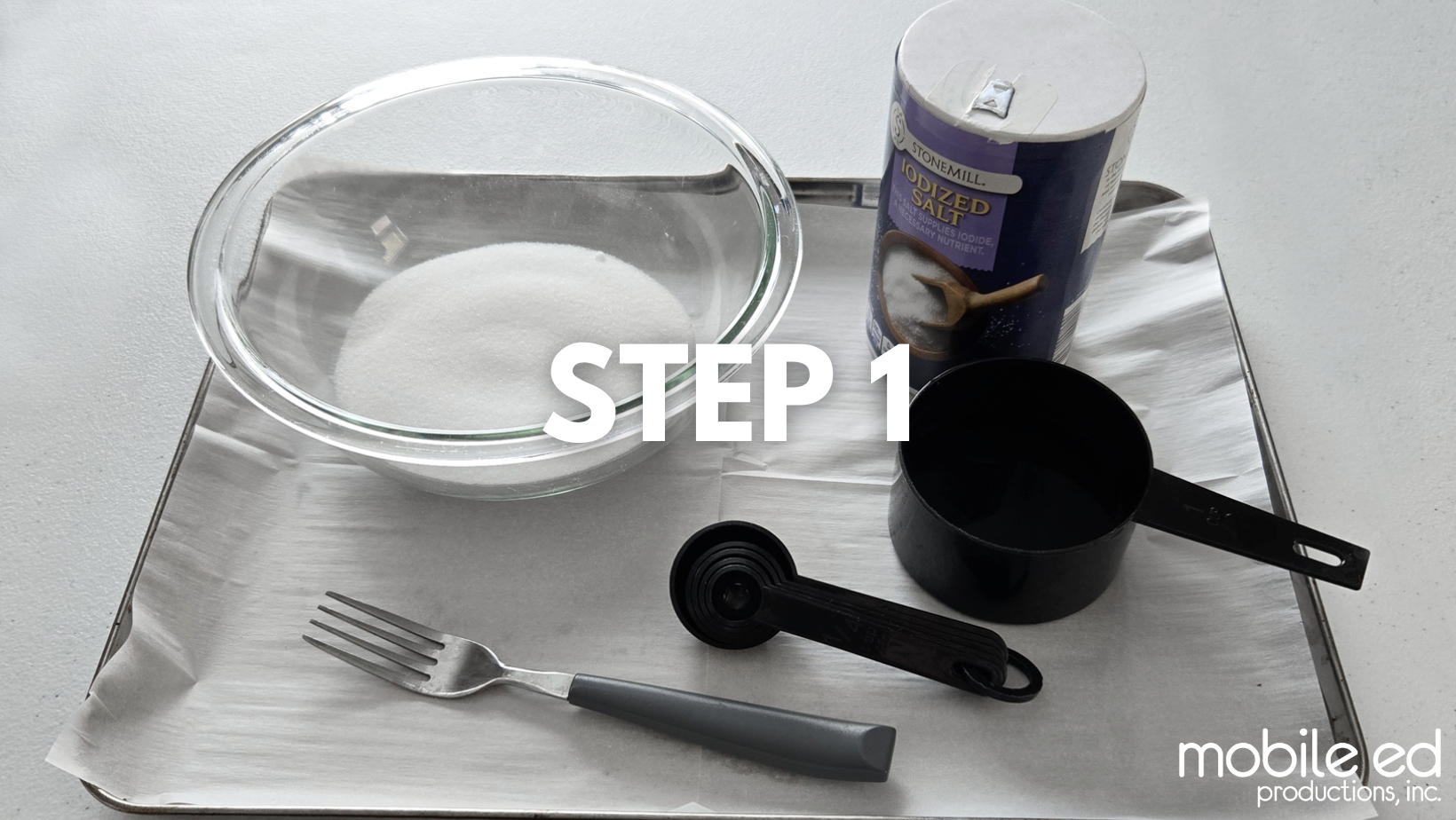
Step 2: Pour the Salt
Pour 2 cups of salt into your mixing bowl.
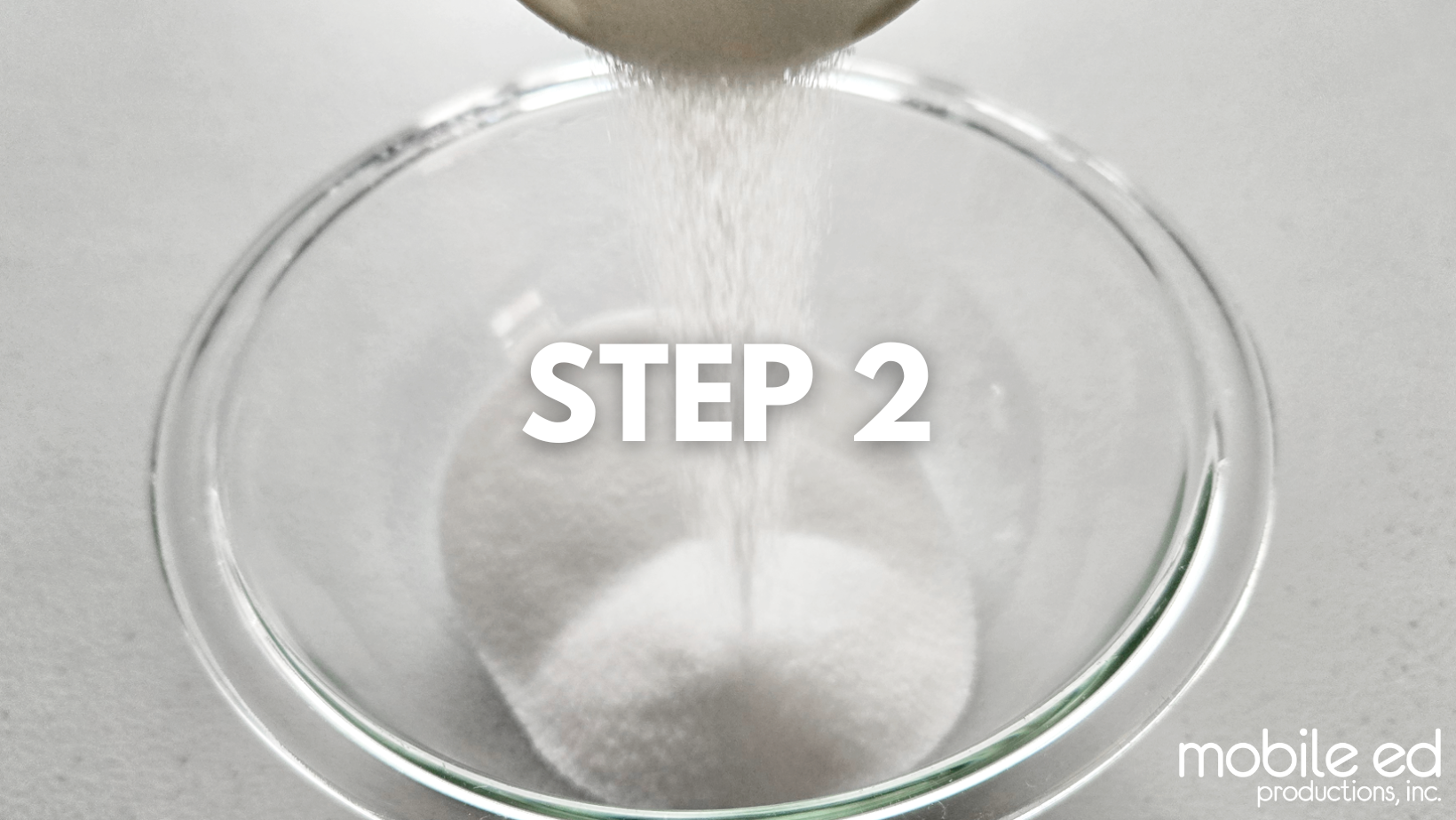
Step 3: Add Cold Water
Add a teaspoon of cold water to the salt and mix with a fork. Add a little more cold water if needed (Do not add too much as salt will dissolve in a lot of water).
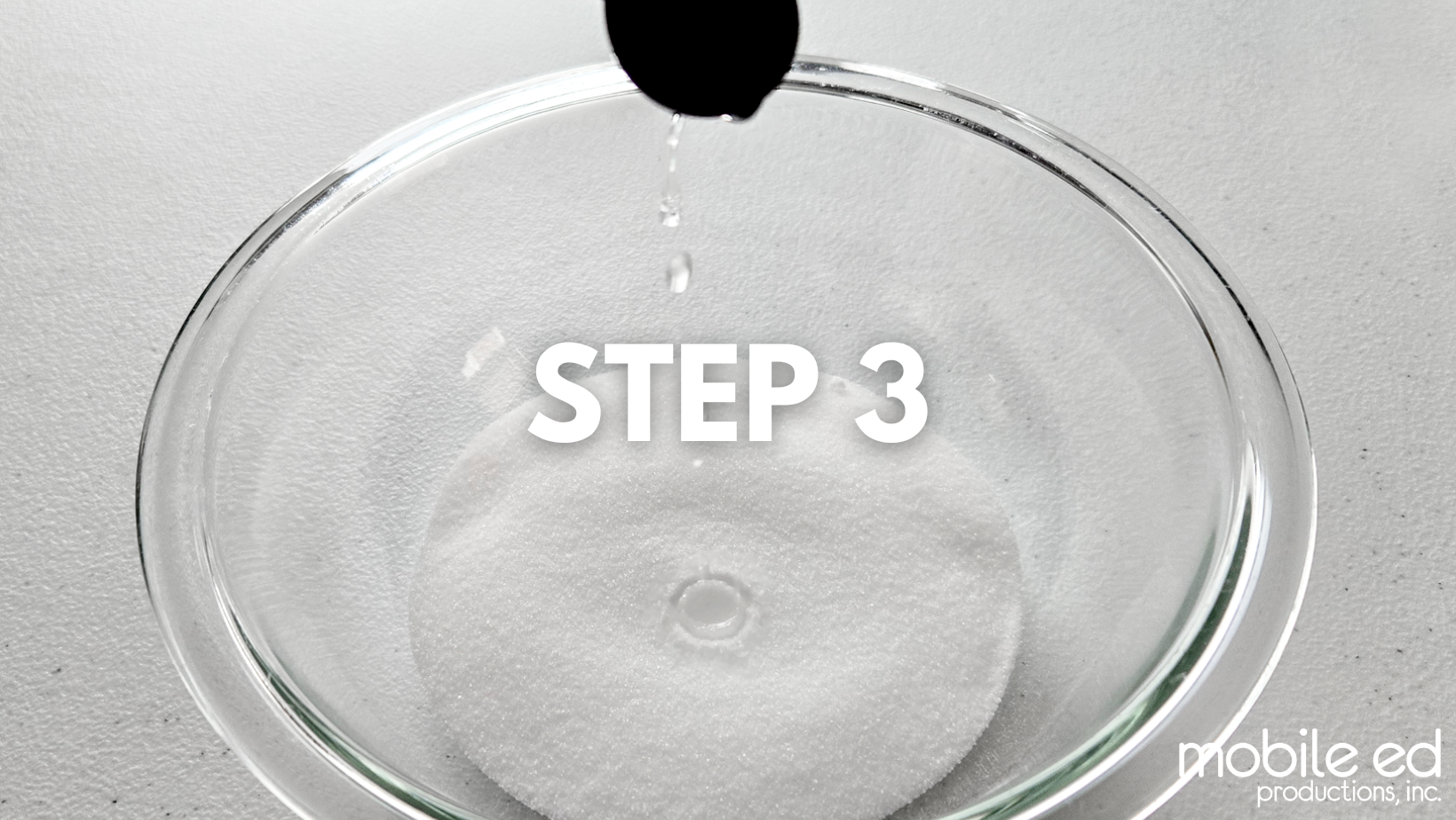
Step 4: Stir the Mixture
Continue stirring with a fork to fluff up the mixture. When it becomes fluffy, enjoy your homemade snow!
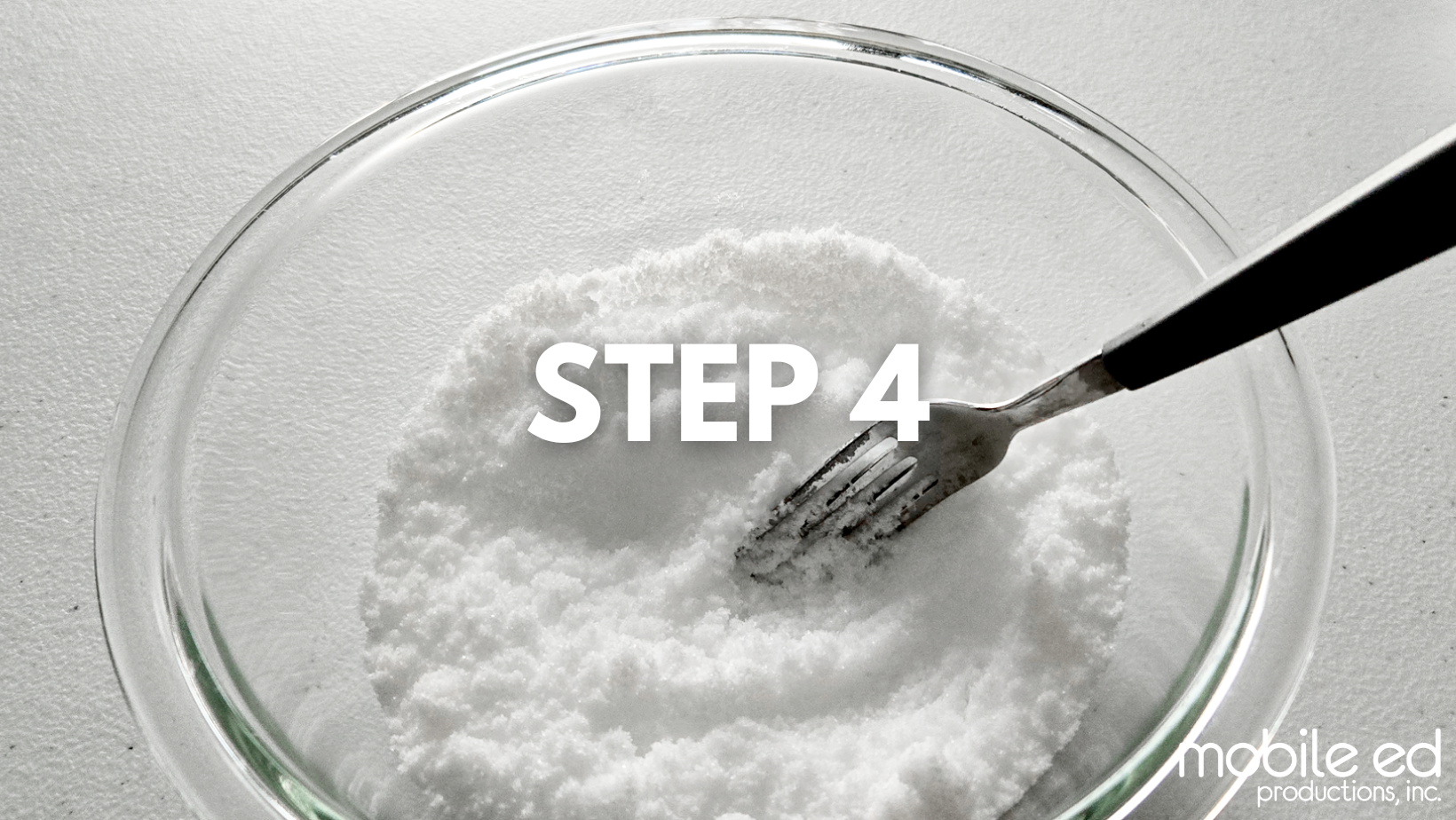
Step 5: Explore and Play!
Challenge students to build snowmen, igloos, ice castles, and more! To clean up, wipe up with a wet rag.
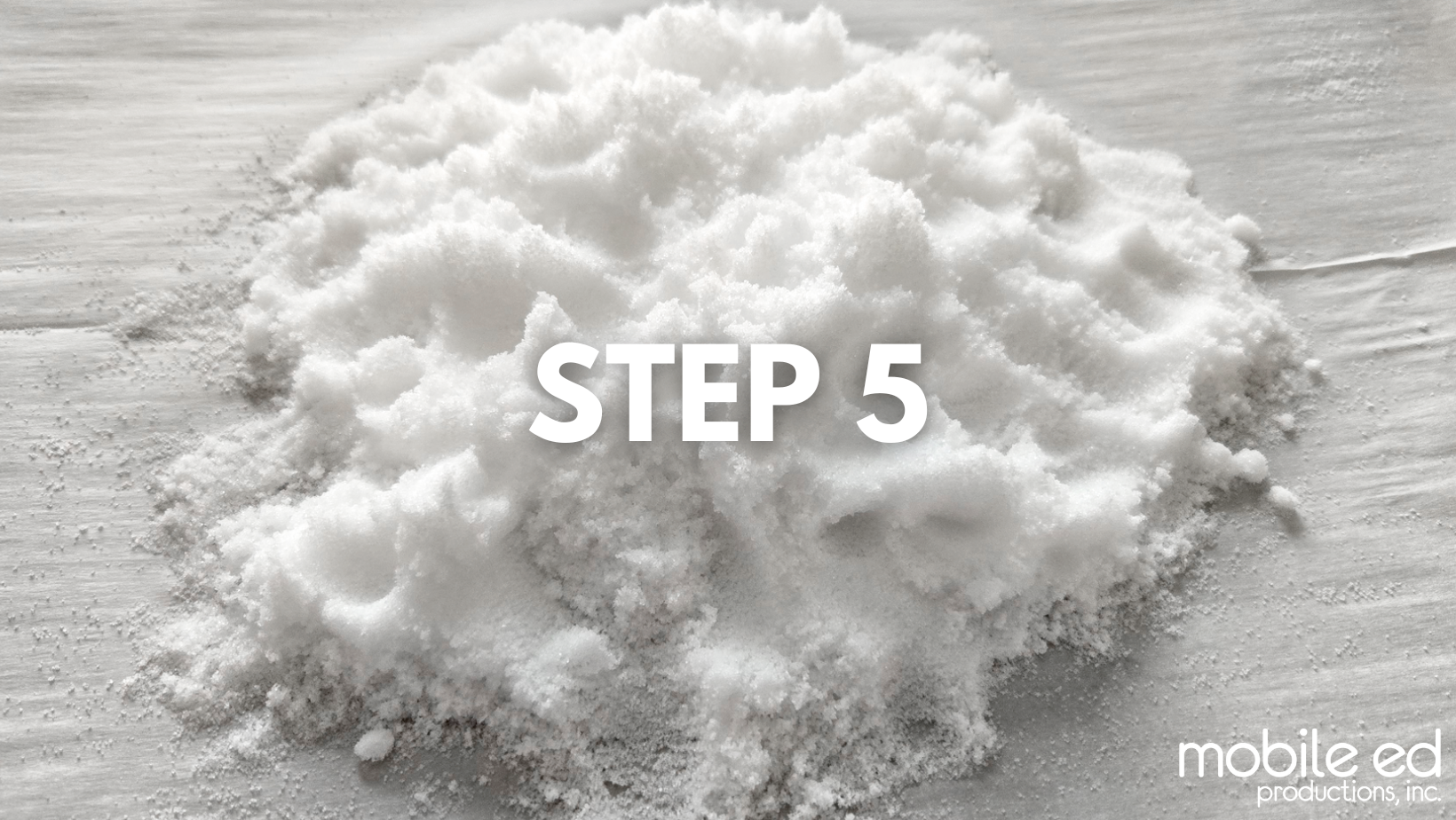
For more hands-on projects for students, check out the Mobile Ed blog! Our team updates the blog weekly with various projects, tips, and educator advice. Click the articles below to explore more educational classroom projects and activities:
How To Create a Lunar Cycle in a Cup Learning Experiment
Students may be anxious to learn about all things outer space after the many recent reports of successful space missions, including one flight, carrying well-known actor William Shatner, and hands-on activities are the best way to grab your students' attention and keep them engaged. It’s proven over and over that…Read More!
Viral Science Experiment: Elephant Toothpaste
Our mission as an organization has always been to excite students about learning, and it remains a top priority today. Some of the best ways we can get students invested in their learning are by getting creative in the classroom and letting our students be involved in their learning. Conducting experiments, whether as a demonstration or as a hands-on project, can do just that. Mobile Ed has a…Read More!
Celebrate George Washington this Presidents’ Day
Celebrations of Presidents’ Day began in the 1880s when George Washington’s birthday was first celebrated as a federal holiday. Debates in 1977 introduced the idea to change the federal holiday to “Presidents’ Day” to include Abraham Lincoln’s birthday, which lies on February 12th. We have…Read More!
Blog inspired by Playing With Rain






